Health
Looking At Cute Cats Triggers Changes in the Brain That Lowers Stress, Say Scientists
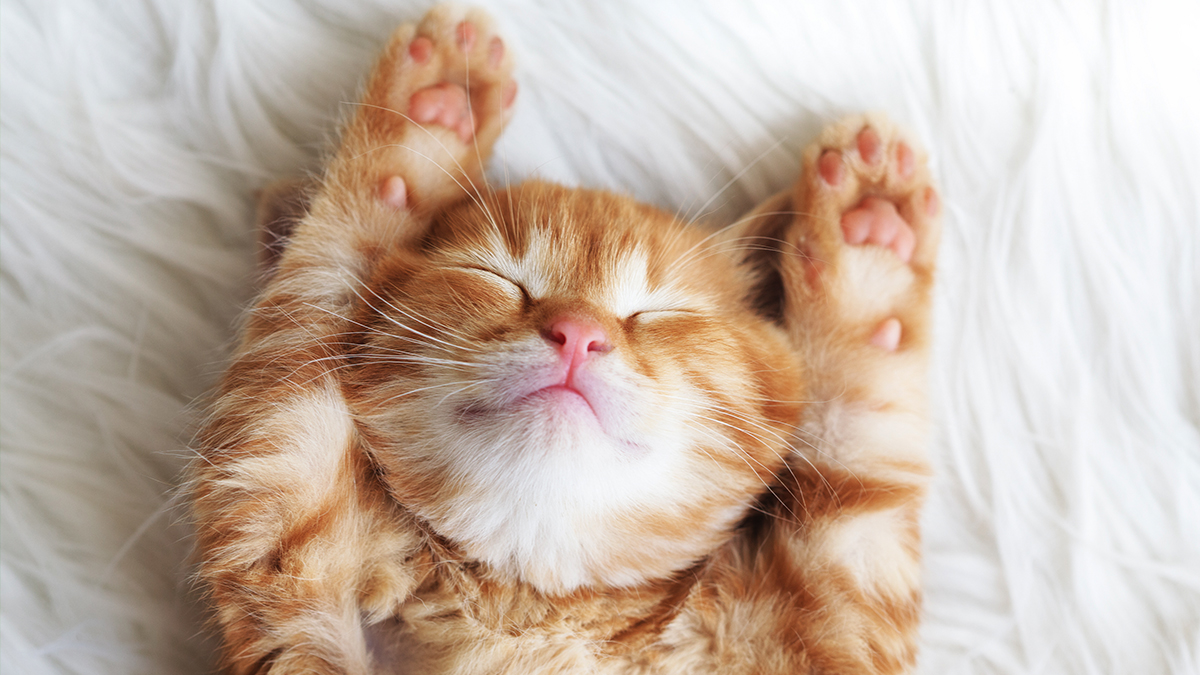
There are few things more delightful than cute cats and fluffy kittens. Whether they’re racing around the room in a bout of zoomies or purring in our laps, cats provide unlimited entertainment. Even when they’re knocking glasses off the table or sitting on our laptops while we try to get work done, they’re still pretty darn charming…and we can’t help but love them.
While we know cats are adorable (and the millions of cat videos that proliferate on social media certainly confirm this!), we wonder what, exactly, makes them this way? The cuteness of cats actually triggers responses in our brains that positively impact us on an instinctive, psychological level — and we spoke to experts to explain just how our furry feline friends can effect our mood and wellbeing. Read on to learn more — and see some bliss-boosting pictures of adorable cats, of course.
We are hardwired to find cats’ faces cute
We know…you’re probably thinking that the cuteness is self-evident — even if you’re not a “cat person” it’s hard to deny the appeal of a fuzzy kitten. That’s because there are scientifically-proven reasons behind why we find cats as adorable as we do. A study published in Frontiers in Psychology found that faces of cats have a similar emotional effect on us as the faces of babies, which triggers the brain to produce more oxytocin, also known as the “love hormone.”
Released into our brains under the right circumstances, oxytocin has the power to regulate our emotional responses in a way that makes us happier, more trusting and more open to others. Thanks to oxytocin, we get a toasty, tranquil feeling that displaces anxiety and worry.
What exactly about cat’s faces triggers our bodies to release oxytocin? Their infant-like features say scientists. Known as “social releasers,” childlike features — which include a big head with a round face, a large forehead, large eyes and a small nose and mouth — engage our lovey-dovey, protective instincts. It gives a whole new meaning to the phrase “fur baby.”
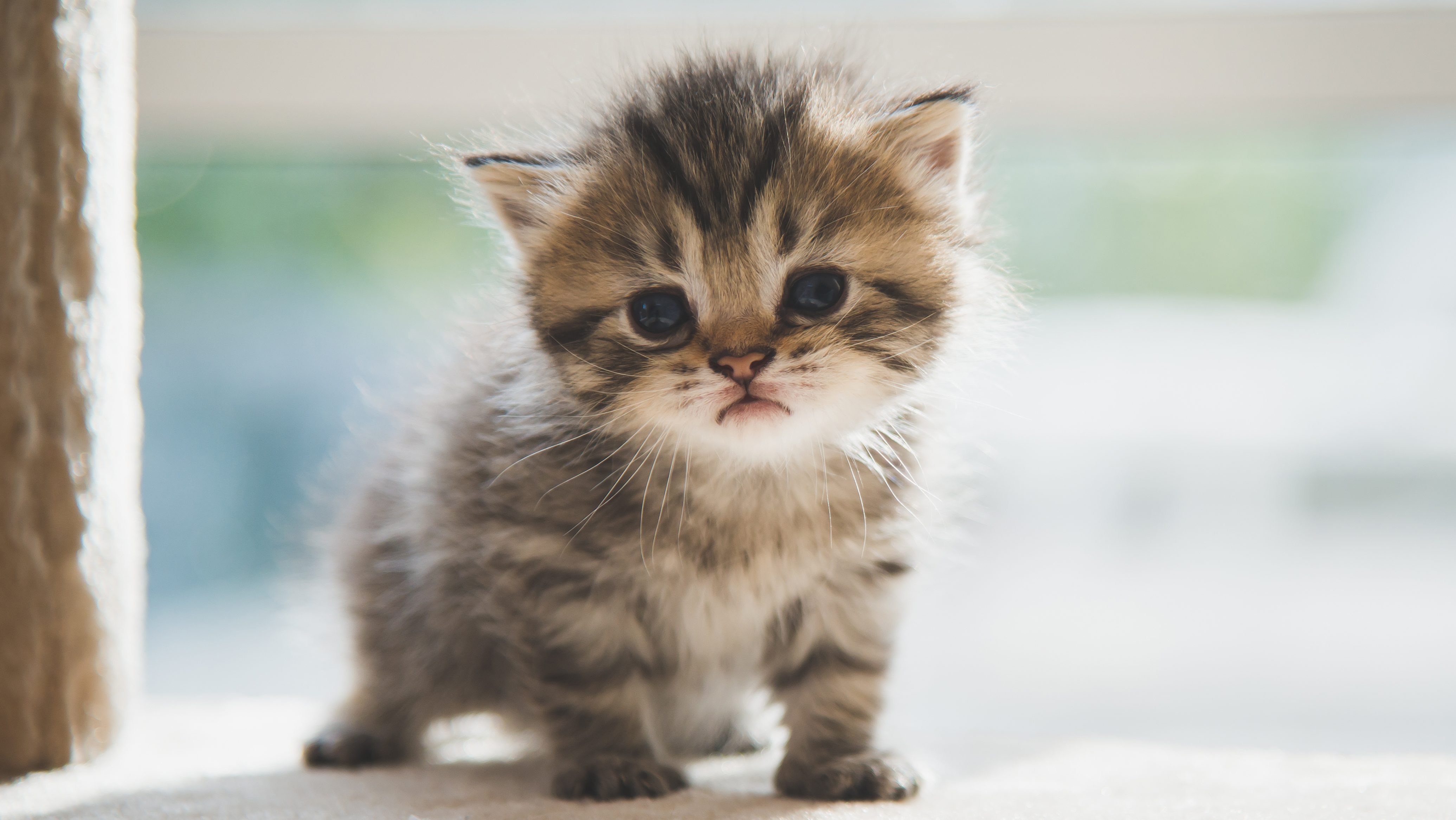
For a treasure trove of cuteness and an accompanying rush of oxytocin, click through 7 Flat Face Cat Breeds That Are (Almost) Too Cute to Handle.
Cute cat behaviors also draw us in
Cats don’t just look cute, their behaviors are also major contributors to the the way they make us feel. “Cats are known for rubbing around their owner’s ankles at feeding time, but many cats will head butt their owners just about anywhere,” says Susan Nilson, a cat and dog training and behavior expert and founder of The Cat and Dog House.
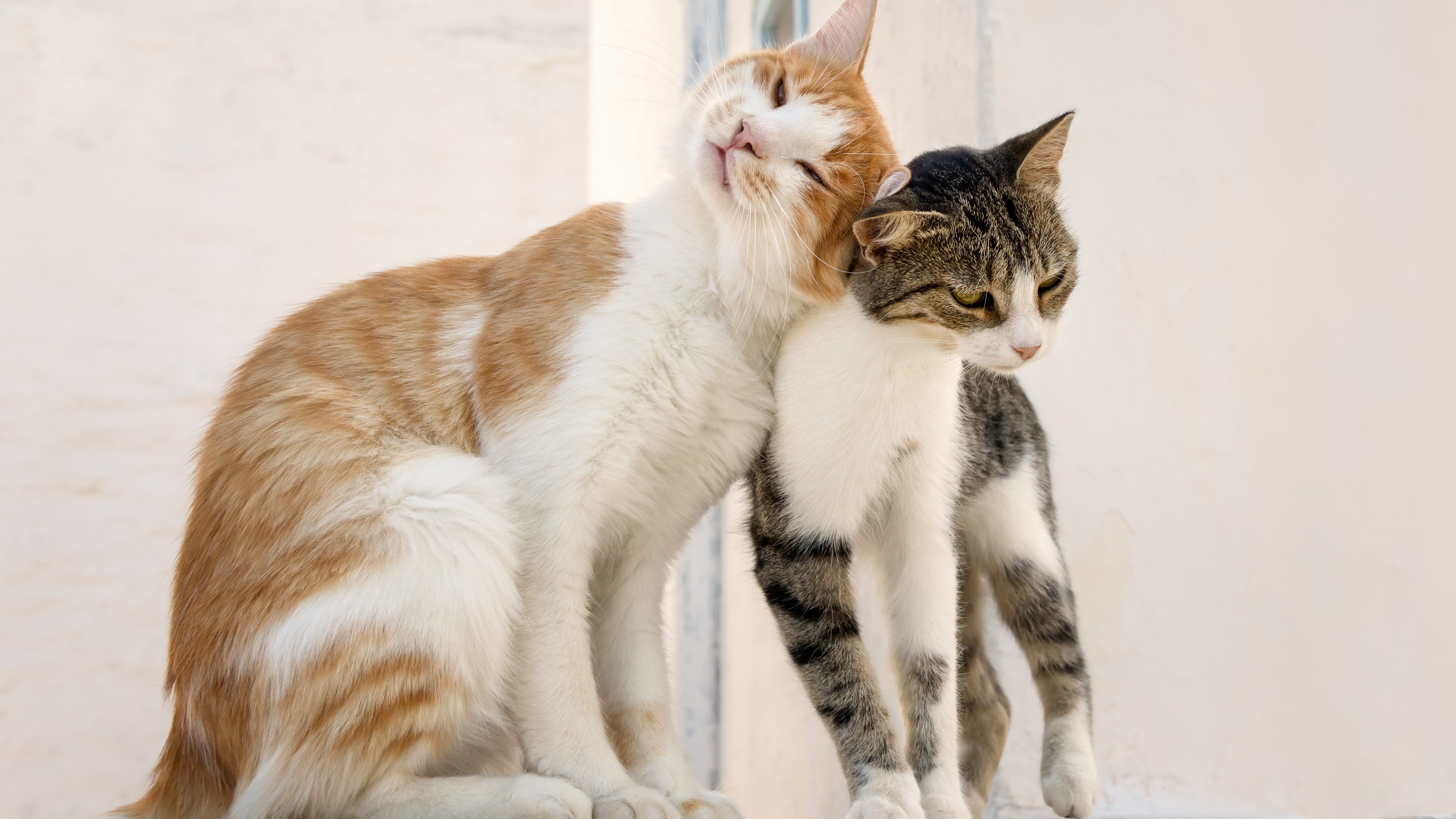
These head butts have special meaning. As Nilson explains, “Cats have scent glands all over their bodies, including the forehead, chin and cheeks, and when they butt heads with you, it’s a way of claiming you as their own and marking you with their scent. It’s a sign of affection, trust and bonding.” Humans also subconsciously pick up on this affectionate gesture and feel a stronger bond with their cat.
Other cute cat behaviors act as reminders of kittenhood. Says Nilson, “Adult cats often knead with their paws, as if they are kneading dough, when they’re feeling happy and content. It’s a throwback behavior to when they were kittens and would knead on their mother’s stomach to stimulate milk flow and feel good while they were feeding.” This behavior, adds Nilson, also sparks our instinctive protective and nurturing instincts.
Cats also often get into the beloved “loaf” position, also known as “loafing” with paws and tail neatly tucked underneath their fuzzy little bodies, when they’re feeling relaxed, which causes them to look round and baby-like. Want to give your cat a fun place to lounge and loaf? Read about the best catios.

Wondering about other quirky cat behaviors? Learn why they lift their butts in the air and why they bite (and how to stop them from doing that!).
Cats know exactly how to communicate with us
Cats are simultaneously cute and smart. Any cat parent will tell you that their pet is a pro at getting whatever they want, whenever they want it. “Cats rarely communicate with each other by meowing, yet they use meowing as one of their primary ways to communicate with humans,” says Nilson.
Cats have been living alongside humans for thousands of years, and “Over time, they realized that humans tend to respond to their meows, which, arguably, sound similar to a baby’s cry,” she adds. The combination of a baby-like face and a baby-like meow works wonders when it comes to capturing our love and attention.
(Click through to read more about the history of how cats came into our lives)

Cuddling cute cats boosts our health and well-being
Ever had a bad day and felt your mood instantly lift as soon as you pet your cat? That’s just one more of their cuteness superpowers! Wendy Diamond, Chief Pet Officer of Animal Fair Media and author of How to Understand Women Through Their Cats explains, “Interacting with cute cats is a delightful symphony for our well-being — petting a cat can release the feel-good hormones serotonin and dopamine, which helps ease stress and boost joy.” There have even been studies showing that petting cats may lower blood pressure and reduce stress hormone levels.
Even more fascinating is that the sound of a cat’s purr is not only calming, and it may also have restorative properties. That’s right — the meditative vibe you get from hearing its little motor run can help heal us. Research has shown that purrs fall within a frequency associated with tissue regeneration. Pretty amazing, right?
Considering all the fun facts about how simultaneously powerful, mysterious and cute cats can be, we can’t wait to have a little cuddle time.
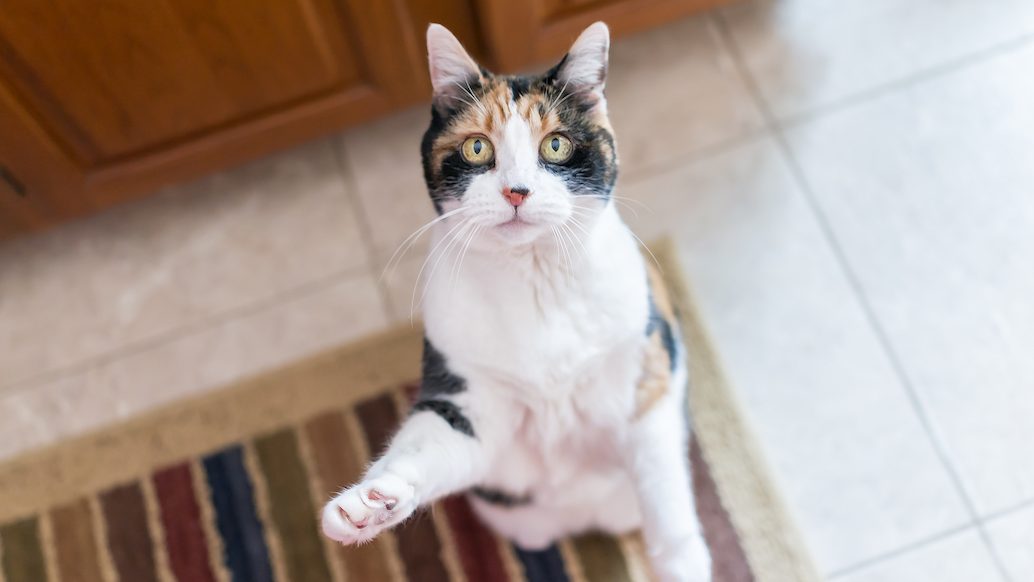
Keep reading for more on cute cats!
The Secret Life of Cats: A Feline Behavioralist Reveals How To Make Your Cat Love You
4 Reasons Cats Bite — And How to Get Yours to Stop
10 Adorable Cats Who Refuse to Let You Do Any Laundry

Health
Drinking alcohol is linked to six types of cancer, experts say: ‘It’s toxic’
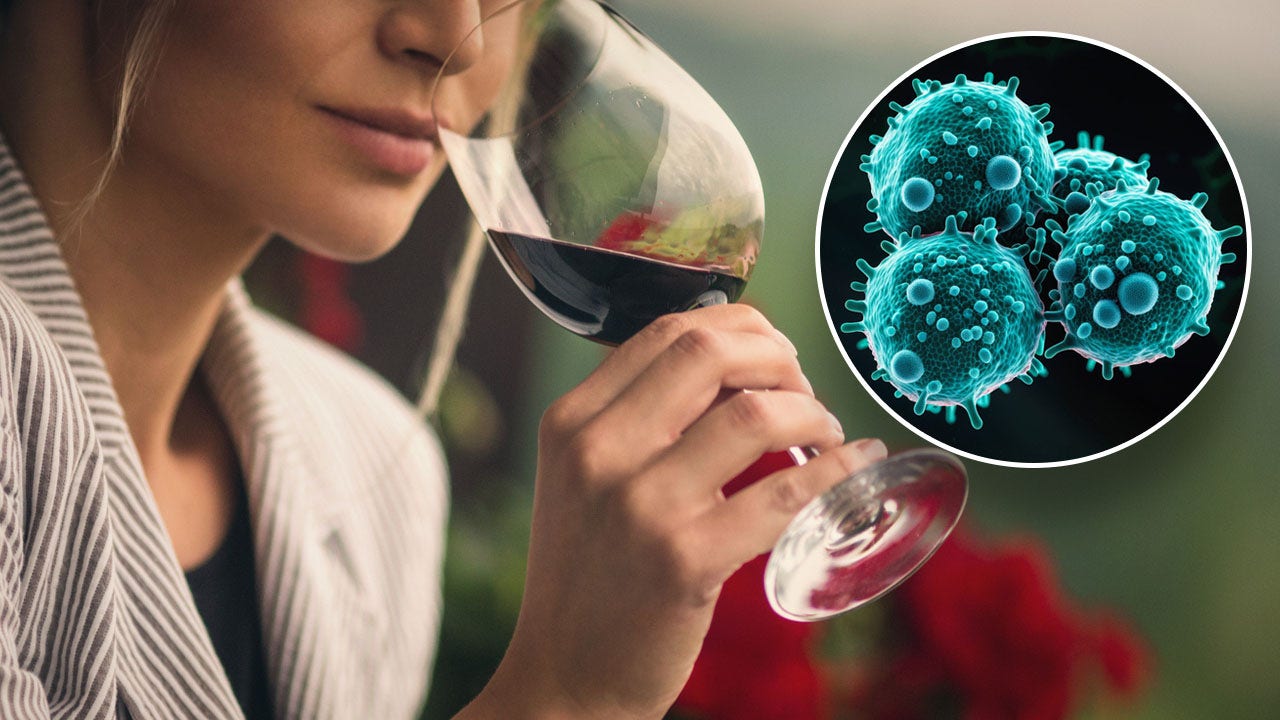
It’s long been known that no amount of alcohol is good for the body — and now new research spotlights the potential harm it can cause.
More than 5% of all cancer cases are caused by drinking alcohol, according to the Cancer Progress Report 2024 from the American Association for Cancer Research (AACR).
Among the modifiable risk factors for cancer, alcohol is the third biggest, behind obesity (7.6% of cases) and cigarette smoking (19.3%).
TO REDUCE CANCER RISK, SKIP THE ALCOHOL, REPORT SUGGESTS
“Excessive levels of alcohol consumption increase the risk for six different types of cancer, including certain types of head and neck cancer, esophageal squamous cell carcinoma, and breast, colorectal, liver and stomach cancers,” said Rajarshi Sengupta, PhD, lead author of the AACR Cancer Progress Report 2024, in a statement sent to Fox News Digital.
More than 5% of all cancer cases are caused by drinking alcohol, according to the Cancer Progress Report 2024 from the American Association for Cancer Research. (iStock)
“Further, research shows that alcohol intake at an early age can increase the risk of cancer later in life.”
Based on these findings, limiting or eliminating alcohol can reduce the risk of developing alcohol-related cancers by 8% and the risk of all cancers by 4%, the report noted.
Addiction expert warns of risks
There has been a “roller coaster of information” about whether alcohol is harmful, according to addiction psychiatrist Dr. Adam Scioli of Caron Treatment Centers in Pennsylvania.
“There have even been reports for years that it could be beneficial for one’s health — but we know now that alcohol ingestion is one of the modifiable risk factors for cancer,” Scioli, who is not affiliated with AACR, told Fox News Digital.
‘DOES SMARTPHONE EXPOSURE CAUSE BRAIN CANCER?’: ASK A DOCTOR
Around 75,000 Americans each year are diagnosed with a cancer that is linked in some way to alcohol use, according to Scioli.
The more someone drinks — both in volume and frequency — the higher the risk, he warned.

Among the modifiable risk factors for cancer, alcohol is the third biggest, behind obesity (7.6% of cases) and cigarette smoking (19.3%). (iStock)
“Alcohol is a toxin,” Scioli said.
“We’ve long known that it impacts any number of organs, essentially starting with the brain and working its way down to the colorectal system.”
Is there a ‘safe’ amount?
Moderate alcohol use is defined as one drink or less in one day for women.
For men, it is two drinks or fewer per day, according to the Centers for Disease Control and Prevention (CDC).
“We’ve long known that alcohol impacts any number of organs, starting with the brain and working its way down to the colorectal system.”
“Drinking alcohol in moderation may increase your overall risks of death and chronic disease,” the agency stated on its website.
“Even low levels of alcohol use (less than one drink per day) can raise the risk of certain cancers.”
Scioli agreed, emphasizing that “we can definitely say there’s no added health benefit to ingestion of alcohol.”
“The line between safety and danger is debatable, and is different for each person.”
While risk factors like tobacco use are widely known, public awareness about the link between alcohol and cancer is still low, according to Sengupta.

Moderate alcohol use is defined as one drink or less in one day for women, and two drinks or fewer for men, per the CDC. (iStock)
Most Americans (51%) are not aware that alcohol increases cancer risk, per AACR data.
“It’s been flying under the radar for far too long — especially given the number of Americans who have met the criteria for alcohol use disorder, which is around 29 million Americans in 2023,” said Scioli.
What needs to change?
The good news, according to Scioli, is that with modifiable risk factors like alcohol, reducing the intake decreases the risk.
CLICK HERE TO SIGN UP FOR OUR HEALTH NEWSLETTER
As the report stated, those who are successful in decreasing their drinking or abstaining below those moderate risk levels will see a risk reduction in overall cancers, he noted.

Around 75,000 Americans each year are diagnosed with a cancer that is linked in some way to alcohol use, an expert said. (iStock)
“We need to do a much better job of making the public aware of the risks inherent in drinking — particularly moderate to heavy drinking,” Scioli said.
“And we need to make the public aware that there are mechanisms by which they can access help if they are unable to moderate their drinking or quit on their own.”
For more Health articles, visit www.foxnews.com/health
To help raise awareness, Sengupta of the AACR called for public messaging campaigns, “such as cancer-specific warning labels displayed on alcoholic beverages.”
Along with that, she told Fox News Digital, “effective clinical strategies that reduce or eliminate alcohol consumption must be considered to reduce the burden of alcohol-related cancers.”
Health
Intermittent Fasting + Walking: The Science-Backed Combo That Helped This Grandma Lose 3X the Weight

Sign Up
Create a free account to access exclusive content, play games, solve puzzles, test your pop-culture knowledge and receive special offers.
Already have an account? Login
Use left and right arrow keys to navigate between menu items.
Use escape to exit the menu.
Health
New schizophrenia drug gets FDA approval, taking novel approach to treating brain disorder

A new drug has been approved for the treatment of schizophrenia in adults.
On Thursday, the U.S. Food and Drug Administration (FDA) approved COBENFY (xanomeline and trospium chloride), an oral medication that is manufactured by Bristol Myers Squibb in New Jersey.
This marks the first new class of medications for the brain disorder in several decades, according to a press release.
5 MYTHS ABOUT SCHIZOPHRENIA, ACCORDING TO A MENTAL HEALTH EXPERT: ‘HUGE STIGMA’
COBENFY is expected to be available in the U.S. in late October, the company noted.
A new drug has been approved for the treatment of schizophrenia in adults. (iStock)
“Today’s landmark approval of our first-in-class treatment for schizophrenia marks an important milestone for the community, where after more than 30 years, there is now an entirely new pharmacological approach for schizophrenia — one that has the potential to change the treatment paradigm,” said Chris Boerner, PhD, board chair and chief executive officer at Bristol Myers Squibb, in the press release.
STUDY REVEALS HEAVY MARIJUANA USE IS LINKED TO SCHIZOPHRENIA
Schizophrenia is a serious mental illness that affects a person’s thoughts, feelings and behaviors.
It often causes hallucinations, delusions, disordered speech and loss of touch with reality, Mayo Clinic states on its website.

COBENFY (xanomeline and trospium chloride) is an oral medication that is manufactured by Bristol Myers Squibb in New Jersey. (Bristol Myers Squibb)
The disorder can also lead to lack of emotional expression, lack of motivation, cognitive dysfunction and social withdrawal.
Approximately 2.8 million people in the U.S. and 24 million people globally are living with schizophrenia.
AI-DISCOVERED DRUG SHOWS ‘ENORMOUS POTENTIAL’ TO TREAT SCHIZOPHRENIA: ‘REAL NEED FOR BETTER TREATMENT’
The disorder has traditionally been treated with antipsychotic medications, but around 40% of patients do not respond to treatments and 60% experience “inadequate improvement” in symptoms or “intolerable side effects,” studies have shown.

COBENFY is expected to be available in the U.S. in late October, the company noted. (Bristol Myers Squibb)
COBENFY works differently than the currently available schizophrenia medications.
“Due to its heterogeneous nature, schizophrenia is not a one-size-fits-all condition, and people often find themselves in a cycle of discontinuing and switching therapies,” said Rishi Kakar, MD, chief scientific officer and medical director at Segal Trials and investigator in the drug’s clinical trials, in the release.
“Schizophrenia is not a one-size-fits-all condition, and people often find themselves in a cycle of discontinuing and switching therapies.”
“The approval of COBENFY is a transformative moment in the treatment of schizophrenia because, historically, medicines approved to treat schizophrenia have relied on the same primary pathways in the brain.”
“By leveraging a novel pathway, COBENFY offers a new option to manage this challenging condition.”

“Today’s landmark approval of our first-in-class treatment for schizophrenia marks an important milestone for the community,” said Chris Boerner, PhD, board chair and chief executive officer at Bristol Myers Squibb. (iStock)
Sam Clark, founder and CEO at Terran Biosciences — a biotech company that develops treatments and technologies for neurological and psychiatric diseases in New York City — commented on the new approval in a statement sent to Fox News Digital.
“I am excited that the FDA has just approved [COBENFY] as a treatment for patients with schizophrenia, marking a big leap forward in the psychiatry space,” he said.
“These patients live with a difficult disease, and this drug with a novel mechanism of action will surely make a significant impact,” Clark continued.
“We look forward to seeing the renaissance continue as this approval paves the way for future breakthroughs and novel patient-focused therapeutics.”
CLICK HERE TO SIGN UP FOR OUR HEALTH NEWSLETTER
The approval follows three phases of clinical trials in which COBENFY was shown to result in a “statistically significant improvement in illness.”

Schizophrenia is a serious mental illness that affects a person’s thoughts, feelings and behaviors and often causes hallucinations and delusions. (iStock)
In terms of safety, the medication’s most common side effects during clinical trials were nausea, indigestion, vomiting, diarrhea, constipation, hypertension, abdominal pain, accelerated heart rate, dizziness and gastroesophageal reflux disease, the release stated.
Patients with certain existing medical conditions may experience other, more serious risks.
For more Health articles, visit www.foxnews.com/health
People should discuss potential complications with a doctor before starting the medication.
Fox News Digital reached out to Bristol Myers Squibb and the Schizophrenia & Psychosis Action Alliance requesting comment.
-

 News1 week ago
News1 week agoToplines: September 2024 Inquirer/Times/Siena Poll of Pennsylvania Registered Voters
-

 Business1 week ago
Business1 week agoVideo: Federal Reserve Cuts Interest Rates for the First Time in Four Years
-

 News7 days ago
News7 days agoVideo: Who Are the Black Swing Voters?
-

 Politics1 week ago
Politics1 week agoDem lawmakers push bill to restore funding to UN agency with alleged ties to Hamas: 'So necessary'
-

 Politics1 week ago
Politics1 week ago'I've never seen this': Top Republican details level of Secret Service 'lack of cooperation'
-

 News1 week ago
News1 week agoElection 2024 Polls: Florida
-

 World1 week ago
World1 week agoCritics slam landmark EU competitiveness report as 'one-sided'
-

 Finance1 week ago
Finance1 week agoThis ETF uses ChatGPT to invest like Warren Buffett
















